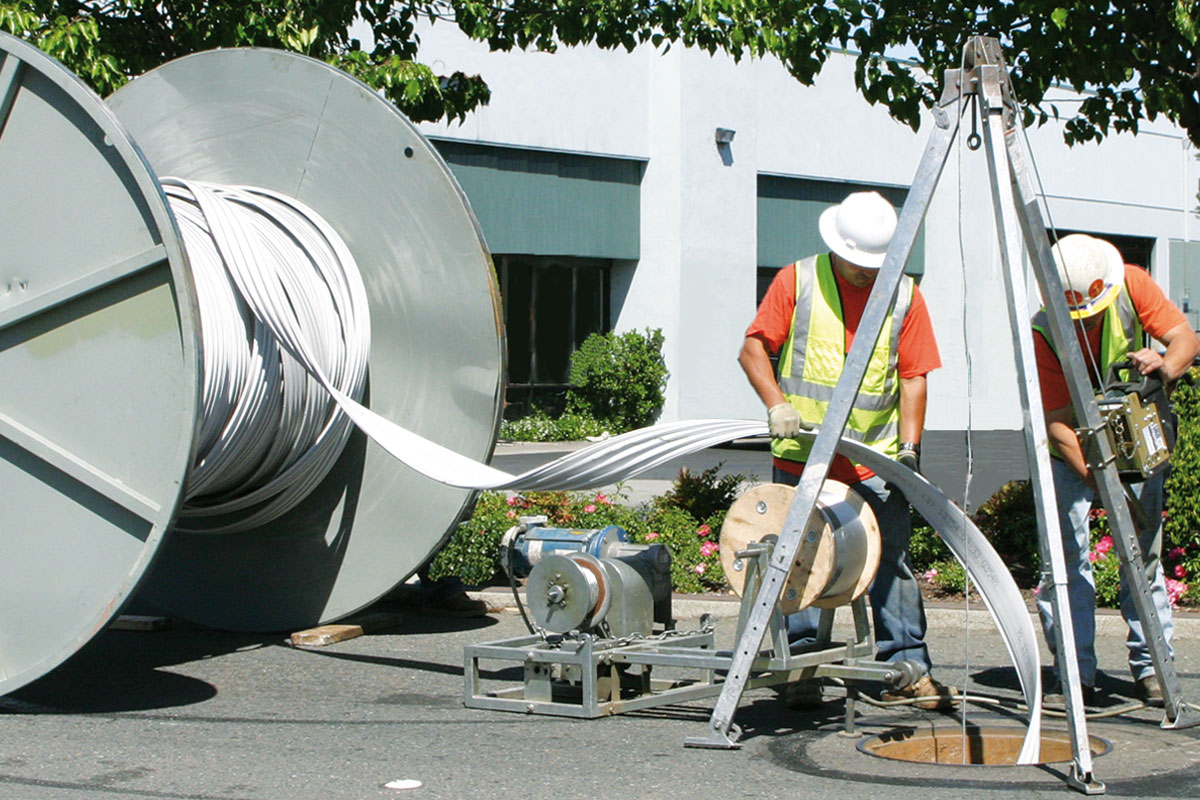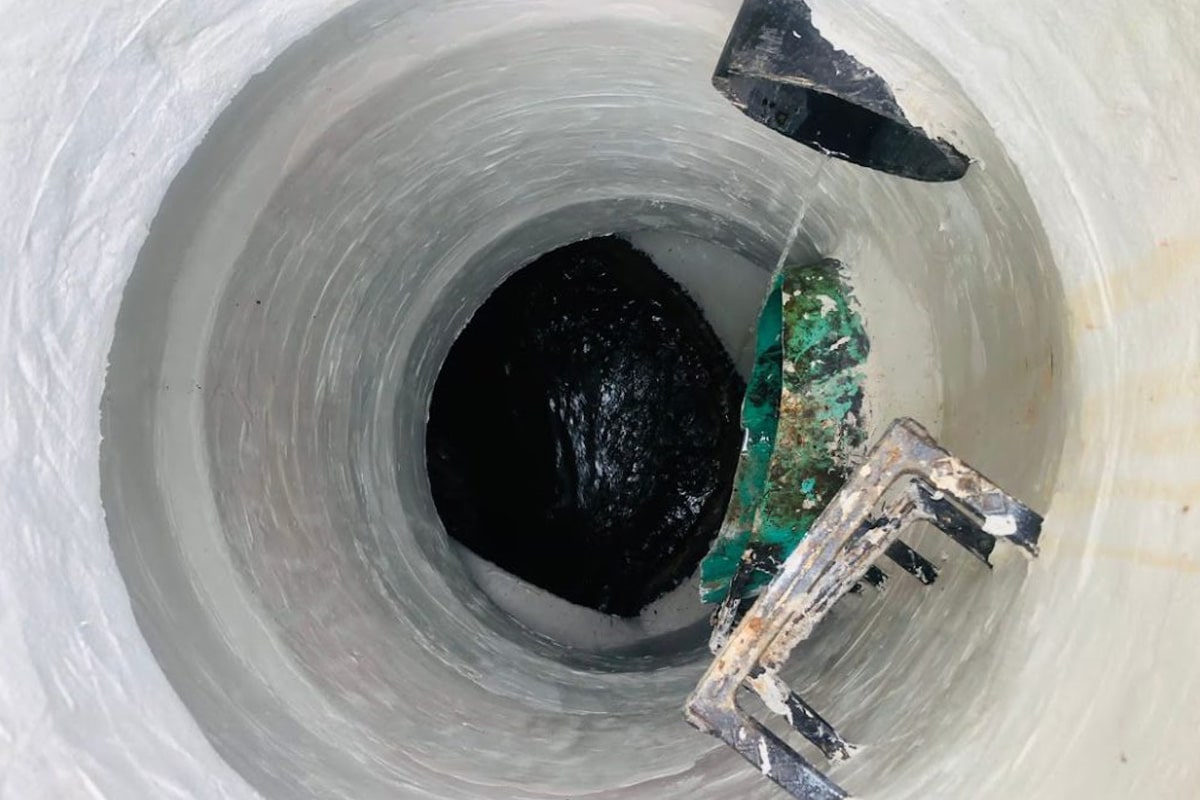
City of Memphis Makes Sweet Music in Manhole Rehabilitation With New Structural Solution
Steve Lindsey of Jacobs Engineering Group has been working since the mid-1980s with the City of Memphis, Tennessee, to reconstruct deteriorated pipe, limit I/I and extend the life of its sewer systems. This often includes infrastructure rehabilitation, among other activities.
Operations recently hit a sour note when its Five Areas Project ran into some particularly challenging manholes on the Jack Carley Causeway line, which serves the President’s Island industrial area.
A 1,420-ft run with eight manholes — three brick-and-mortar, and five precast concrete — on a 15-in. VCP sewer main of mid-20th century vintage, required significant rehabilitation of structures compromised by age and H2S gas. One manhole required immediate attention, for which Lindsey had to oversee an entirely new approach to putting a coda on its remediation.
Deep Problems
In a city with deep manholes, these weren’t the deepest, averaging 42 ft. But one in particular, a 50-ft brick structure, was rated as being in catastrophic failure status. Its mortar was largely non-existent, and its bottom bench structure was badly deteriorated. But this one wasn’t just worn away, it was completely missing, along with enough concrete to create a basketball-sized hole, from the invert up about 4 ft.
The cured-in-place pipe (CIPP) lining company, Granite Inliner, which was rehabilitating the pipeline and manholes, felt the deteriorated manhole was a safety concern, and said their technicians would not re-enter the manhole until it was rehabilitated.
Right Place, Right Time
Lindsey immediately contacted Troy Reed of CTR Coatings, a subcontractor on the project, since he was already familiar with the project, was on site, and had an established working relationship with Lindsey. Lindsey called a meeting with Reed and City Environmental Administrator Scott Morgan, who told Reed, “I need you to come look at this manhole, take videos and tell me what needs to be done, so I can get it online.”
Granite’s technicians had been unable to move their jetter through the line at the bottom of this 48-in. diameter manhole, causing them to discover the missing bench. Aside from the safety issue, they didn’t know how they would get the water out of the manhole long enough to install their CIPP lining.
During the meeting, it was decided that Reed would venture into the manhole to assess the specific severity of the issue, and return with recommendations for moving forward.
“Troy actually made an entry into the manhole and brought back photographs and descriptions proving that we certainly did have a problem,” remembers Lindsey. “We decided to explore the possibility of reconstructing the bench with a fully structural repair method onto the bottom of the manhole. This would shore it up, restoring structural integrity so that CIPP crews could re-enter and lining could be completed.”
Unusually Difficult Conditions
Though it’s a rare project that goes without a hitch, this manhole — the second-to-last on the run — proved uncommonly challenging. Aside from the severity of the structural deterioration and the depth of the manhole, it also was located just 6 in. away from a loading dock at the Carolina National Transportation company, an OTR trucking firm. Luckily, it did afford just enough room for CTR to set up its confined space entry equipment.
The location is firmly in the floodplain of the Mississippi River, only about 3,000 ft away. The soil there is sandy and porous and — especially at 50 ft down — exposed to hydraulic pressure and a high groundwater table. Though the manhole was plugged and bypassed, it was consistently taking water from sustained high Mississippi River levels.
Demanding Application Requirements
This was a huge problem, because the structural solution chosen, OBIC Armor 1000, uses a three-layer installation process that requires all active leaks be stopped prior to application. It was chosen for both its structural enhancement and protective properties, and its quick application and return-to-service. But to perform properly, Reed says, “The No. 1 aspect of doing any coating is prep, prep and prep. If you don’t do that right, there’s going to be a failure. I don’t care if it’s the best product out there. Seen it, done it.”
On this manhole, CTR technicians used a 3,500-psi pressure washer to blast away debris and crumbling mortar. Then they put a man on a lift, safety harnessed on, and lowered him down inside. He pressure-washed it all by hand, then looked for leaks. When he found them, he injected OBIC Hyper Seal grout to stop them. Then the tech came up and fed a 12-in. hose from a 200,000 BTU blower down inside, which took about 45 minutes to dry the manhole. This whole prep process took the entire first day of the installation. And that’s when the rain train started.
“We had two or three occasions where there was some pretty hard rain, which made it very difficult,” recalls Lindsey. “There were groundwater inflows into the broken manhole, a constant problem. The guys spent a day or so chasing water around and then once we’d begin, here would come another crazy rain, and we’d be right back where we started. So, it took an extended period of time. But Troy and his guys kept fighting the good fight.”
Painstaking Application
Finally, the day after the latest drying, the rain held off and Reed was able to go down to the bottom of the manhole. He installed reinforcement that his foam-based structural material could adhere to. Then he sprayed enough of the material used for the OBIC Armor system’s structural second layer to fill the void left by the missing bench.
Afterward, a CTR tech, starting at the top of the manhole, was lowered slowly down while spraying the first layer of the OBIC Armor 1000 System. This is the moisture barrier and goes on at 165 F, and fully sets in about 10 seconds.
Once the technician reached the bottom of the manhole, the spray gun was switched out for one that applies the second layer of the OBIC 1000 system, a closed-cell polyurethane foam. This is an uncommonly dense, structural material that goes on at about 135 F, and dries in about 20 seconds.
Aside from providing structural properties, the foam is also injected to fill in bug holes, missing mortar joints, large cracks and any other voids. It was applied on the way up, as the tech was slowly lifted to the top again.
The third and final layer is the same orange-hued polyurea as the first, and acts as a corrosion barrier. Able to withstand up to a 30 percent concentration of sulfuric acid, it passes the ASTM G210-13 Severe Wastewater Analysis Test (SWAT). This layer is impermeable and non-reactive to most industrial compounds. It was applied in another downward pass through the manhole, after switching back to the first spray gun at the top.
The total dry time is about two minutes, unlike cement, whose cure time can be up to 28 days.
Finally, with the last layer finished, a Holiday spark test was performed by a second tech. This is a quality control check, to ensure no spots were missed or unevenly coated.

The manhole before rehabilitation.

The manhole after rehabilitation.
All’s Well That Ends Well
Lindsey is effusive about the results. “Both the liner and the manhole turned out great. They look excellent on the post-remediation videos. It was a very difficult project, but that’s what we do. We’re known for not walking away sometimes, probably even when we should.” And he gives great credit to CTR as a partner in the effort.
“A lot of folks just walk off, and say, ‘You can’t do it.’ And that’s really one of the reasons Troy and I have been able to work together in the past. There’s really not an ‘I can’t do it’ thought process in Troy’s mind.”
The other factor in the success of this project, Lindsey believes, is in the new OBIC Armor 1000 solution. “It meets our physical properties requirements, it meets our corrosion barrier requirements. And with this, I have amended many specifications where I do business or have that authority, to include OBIC as an ‘or equal.’” He believes there’s a definite place for OBIC products in Memphis’s underground structure future.
“As a rule, in these older parts of town, Memphis has a high degree of hydrogen sulfide in its sewers, especially as you get down toward the treatment plant. The hydrogen sulfide rate is very high. It’s aggressive and just tears up the concrete, which is one of the reasons clay was often used in its inception, because it’s impervious to that. But that doesn’t bode well for brick manholes and the mortar in between.”

OBIC Armor 1000 was chosen for both its structural enhancement and protective properties, and its quick application and return-to-service.
Hard-Won Knowledge
Lindsey reflects on the success of this project with the candor of someone who’s been in the industry long enough to understand its realities. “I can plausibly make a case that pipeline rehab, when done correctly, is better than newly laid infrastructure, because the solution is generally monolithic. You don’t have joints, and it’s impervious to the things that commonly degrade sewers.”
He warns against taking anything for granted, however, when searching for trenchless remediation solutions. “Explore all your possibilities, and if you don’t know what they are, find someone who does. They don’t teach this in engineering school. There’s only one place to get this (knowledge and experience), and that’s in the field. Cruising the Internet is not a legitimate alternative to real-world experience. It’s in the field.”
That said, he also cautions against believing every claim that’s made about any solution until you see it for yourself. “This is a specialized industry that is changing rapidly all the time, and not all that glitters is gold.”
Writing good quality project specifications is a must, he says, but “the best spec is worthless if you don’t have the knowledge and will to use and enforce it and understand where it came from.”
The same diligence is critical when choosing contractors to work with, he believes. “I know what kind of person it takes to tackle a hard project.” He leans a lot on friends in the industry to find good working partners, which is how he considers contractors. “Work with your contractor, partner with him, team with him. Be firm, but be fair. Foster an environment of cooperation instead of an adversarial situation, which I see so many times out in the field.”
Ultimately, he says, for him choosing the right contractor partner and rehabilitation solution means being “somebody who can walk between the raindrops and knows the difference between the real world, and how it’s drawn up on paper. Those are rare birds indeed, because the only perfect project is the one that’s never been built.”
Truly, music to the ears of every engineer, in the Birthplace of Rock and Roll or anywhere else.
Mary Shafer, a technical writer and social media strategist for Creative Raven.




